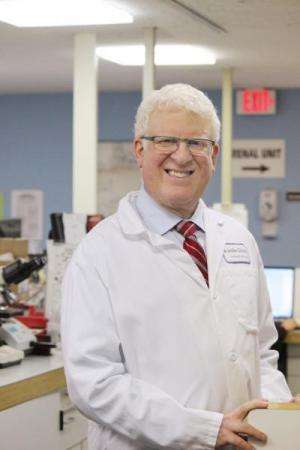New study shows core factors and strategies to turn primary care practices into PCMHs

A new study conducted by Robert A. Gabbay, M.D., Ph.D., FACP, Senior Vice-President and Chief Medical Officer at Joslin Diabetes Center and Harvard Medical School, and colleagues identified three core factors and thirteen strategies that increase the probability of getting buy-in from the practice teams within a medical practice to becoming a fully-functioning patient-centered medical home (PCMH). This study was published in the January/ February issue of the Annals of Family Medicine.
"Having buy-in is critical for any organization, not just in healthcare," explained Dr. Gabbay. "In healthcare, it is even more important as healthcare is undergoing a transformation across its entire spectrum. PCMHs are a crucial part of the changing healthcare system since primary care is at the crossroads of where care is delivered for all Americans."
The study was conducted in Pennsylvania during the first regional rollout of a statewide PCMH initiative involving 20 small to mid-sized medical practices. Researchers interviewed 136 individuals and conducted seven focus groups. They also used transcripts from monthly reports and site visits to gather information pertaining to strategies for securing the buy-in of providers and office personnel.
The researchers identified three core strategies: improved communication, better resource utilization and the creation of a team environment, all of which helped make the transition to a PCMH a success. In the area of effective communication, the study found internal campaigning by administration to convince providers and employees of the need, benefit and urgency of the transition was necessary for change to occur. Utilizing data to back up decisions, providing acknowledgment of successes, and employing respected PCMHs champions (employees already familiar with the benefits of PCMH) also made it easier for staff to understand the benefits of change.
Another finding of the study was that providers and staff have to view themselves as part of a team for a PCMH to operate effectively.
Additionally, having defined, but flexible work roles was also found to be positively associated with greater staff buy-in.
"We uncovered that by creating a team environment, you encourage staff to create ownership, accountability, support and confidence," said Dr. Gabbay.
Both financial and personnel resources have to be targeted to get the best results.
"Outcomes of the study have already been implemented in our network in Pennsylvania that shares best practices," commented Dr. Gabbay. "As the Joslin continues to produce and disseminate their findings and best practices to primary care providers regionally, nationally and across the globe, we will continue to emphasize the important of receiving buy-in from staff while transforming into PCMHs and better coordinated care delivery systems."

















